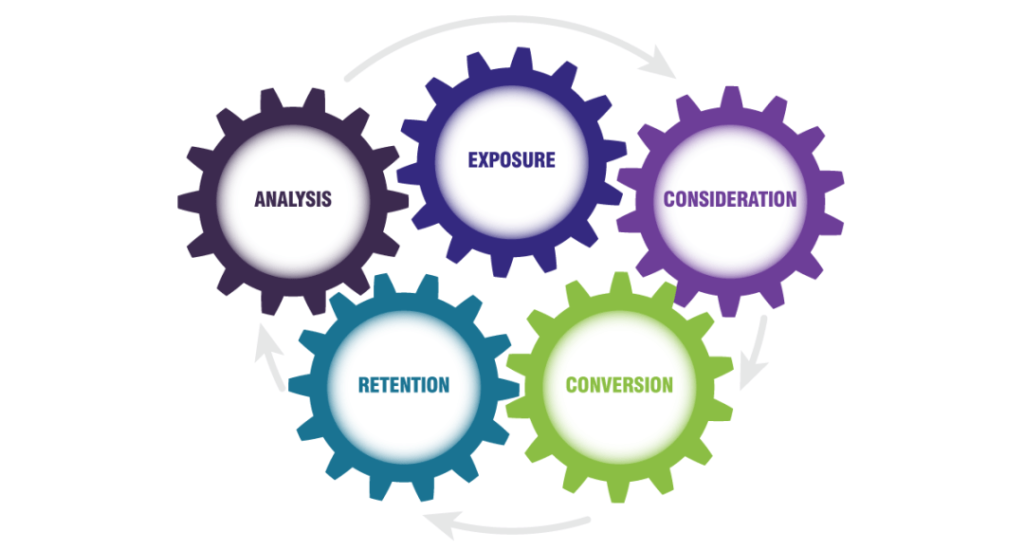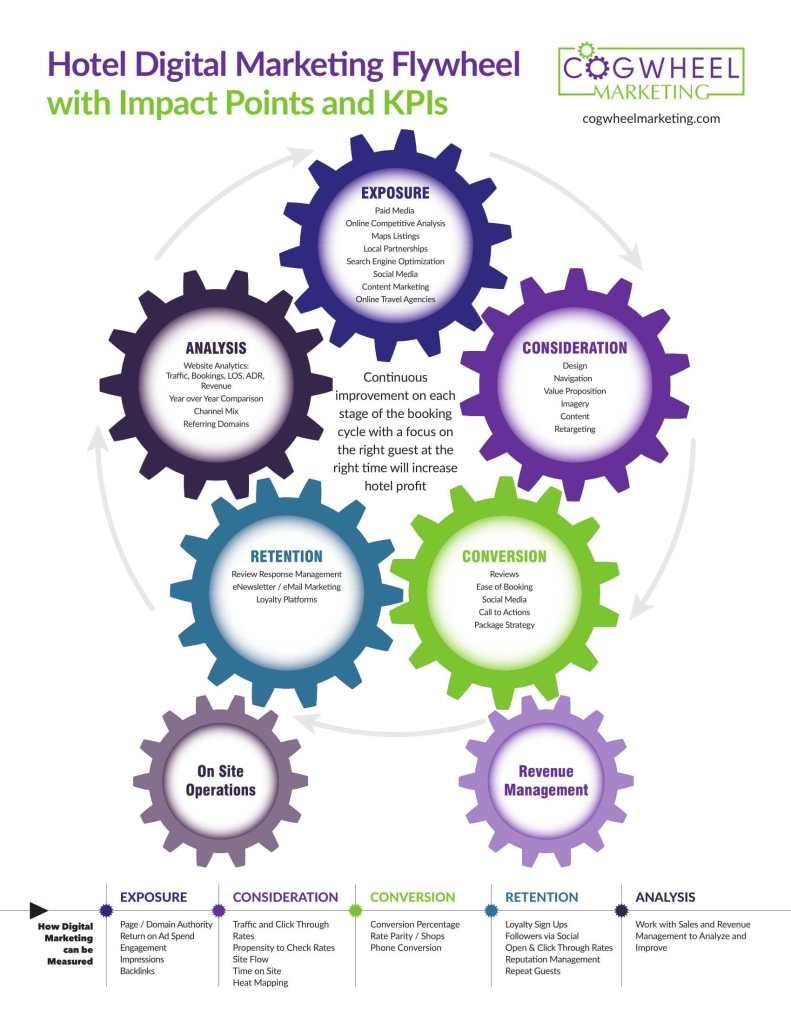The “Old” Sales Funnel
NB: This is an article from Cogwheel Marketing
In every sales and marketing class, since the beginning of time, they show you a diagram of a sales funnel. It was shaped something like a cone or upside down pyramid, like this:
Over time, the model was twisted for digital marketing. The main categories generally focused on Awareness, Interest, Desire then Action. A few (very few) add another segment at the bottom called Retention or Loyalty.
Digital Marketing is cyclical and ongoing. The process does not stop with a Conversion or Sale or Signed Contract.
So, why isn’t it a circle?
It still remains true that you need a lot of awareness for even a few conversions. But, continually improving on each stage of the process while gathering data to do it all over again is what it is about. If you don’t learn from your mistakes, then what is the point?
In hotels, unlike online retail, you are selling a finite number of rooms each day of the year. If you don’t sell a room one night, it does not roll over to be sold the next night.
So, instead you hone your skills each and every year. The first year of a hotel’s business generally has the largest learning curve with the biggest emphasis on Exposure. The cycle then becomes filling the hotel with the right guest at the right time to achieve the highest profit margin. Hopefully you get a few things right and that Exposure section doesn’t have to be so large anymore.
To make this happen, there must be cohesiveness between the Trifecta: Revenue Management, Sales and Digital Marketing. Only then, when all players are on the same page, can the best results be achieved.
Digital Marketing Life Cycle
In a new way of cyclical thinking, here is what the “funnel” should look. Added to it, are different points of impact where digital marketing impact the consumer journey.
This diagram shows the various touch points that Digital Marketing has in this cyclical process. Some of these impact points overlap and can go in multiple places. For instance, email can be used as an Exposure technique, but also for Retention. Social Media can be used in more than one place as well. You can use it to gain awareness or push them from Consideration to Conversion and even in Retention.
Even better is that most of the digital marketing journey can be tracked with defined KPIs, some of which are notated. We won’t get into attribution discussions today…
Here is another analogy about hotel teams working together.
- Digital marketing brings the guests to the front door via Exposure, Consideration and partially Conversion.
- Revenue Management brings them through the hotel’s door (metaphorically) as they make their booking with proper rate management.
- Operations, while the guest is on-site, should delight them and have them repeat coming through the door.
Through various tools and analysis, Digital Marketing should study breaks in the system and work with the team to improve upon it.
Then, hypothetically, the Exposure set gets smaller and more targeted over time. Or Loyal and Repeat customers skip Exposure and Consideration altogether.
If all you get out of this is that the digital marketing process is ongoing, and doesn’t end at a conversion, I’m happy.






